
| 24-inch Reflector | |
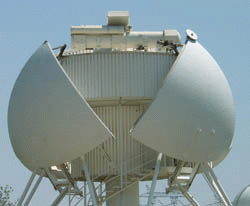 | The 11-in/24-in vacuum reflectors were built by Boller and Chivens. A coudé configuration is used to feed a vacuum spectroheliograph, which is too massive to mount directly onto the telescope. The optical path is evacuated to minimize internal seeing effects. Observations of the sun can be made in nearly monochromatic light at any visible or near-infrared wavelength.
The 24-in is used primarily for Zeeman (magnetic field) and Doppler shift (velocity) studies. Currently, a CCD detector is used to record 2D polarized spectra of selected regions. |
| 11-inch Reflector | |
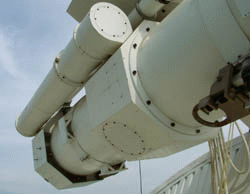 | The 11-in reflector is mounted directly on the main tube of the 24-in telescope, made possible by the tube's especially heavy construction. The 11-in beam is inserted into the main optical path behind the 24-in primary and has full access to the same equipment (e.g,, the spectroheliograph) as the 24-in. It, too, is used for Zeeman magnetic field and Doppler field studies. |
| Spectroheliograph | |
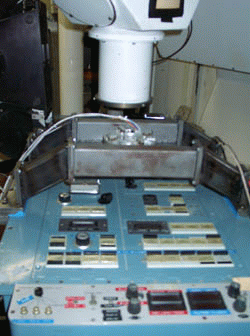 | The spectroheliograph is fed a solar image from either the 24-in or 11-in telescope with a resultant diameter of about 4 1/2 inches. Its 1:1 reimaging optics result in a spatial scale of 0.059mm per arc second at the exit slit. The lower portion of the instrument is evacuated while the upper section containing the final optics and cameras is kept at atmospheric pressure. |
| Infrared Camera | |
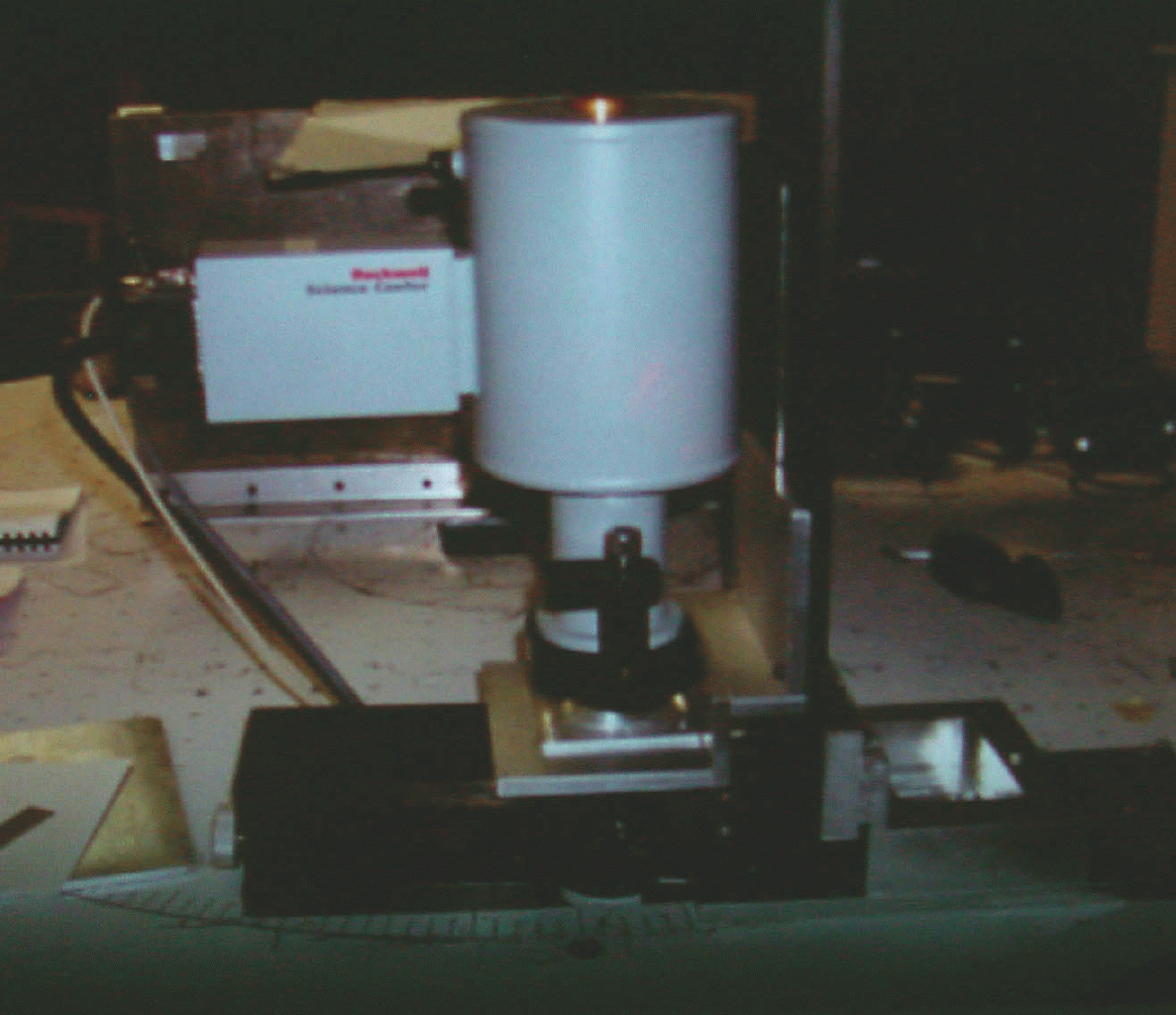 | The infrared camera, built by Rockwell, has a 256x256 pixel HgCaTe (Mer-cad Tel) detector and is cooled by liquid nitrogen. It has a wavelength range of 1.0 to 5.0 microns.
This is our most recent instrumentation addition and is still in the testing phase. Its purpose is to study outflows in coronal holes as well as magnetic fields in sunspots, especially oscillations found in sunspots. Successful images have been taken at 1.0, 1.6, and 2.0 microns. Current infrared studies are a collaborative effort with NSO. |
| CFDT1 | |
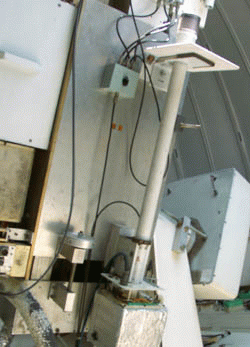 | The Cartesian Full-Disk Telescope No.1 (CFDT1) is a photometric telescope whose images are used to identify bright (facular) and dark (sunspot) features on the solar disk.
CFDT1 is a fixed-focus, one-inch aperture telescope with a 512-diode linear array giving 5 arc-sec per pixel resolution. As the earth rotates, the sun drifts through the telescope's field of view and the telescope takes 512 sequential scans of the sun, building a 512x512 solar image in about three minutes. Images are taken daily, weather permitting, in three wavelengths: red at 672.3 nm, blue at 472.3 nm, and Ca II K-line at 393.4 nm. The red and blue images are used primarily to identify sunspots while the Ca II K-line images are used to identify faculae. CFDT1 came online in May 1985, initially with red images; blue images began in April 1988; and Ca II K-line images began in May 1988. This instrument is used primarily for irradiance studies. |
| CFDT2 | |
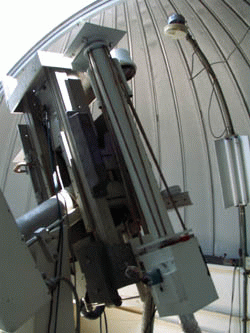 | Big brother to CFDT1, Cartesian Full-Disk Telescope No.2 (CFDT2) is a second, larger, photometric telescope that came online at the beginning of 1992. Images obtained from CFDT2 are used to identify bright (facular) and dark (sunspot) solar features and are used primarily in irradiance studies.
CFDT2 is a variable-focus telescope with a three-inch aperture (currently stopped down to two inches) with a 1024-diode linear array. 1024 scans of the array are taken as the earth drifts and the sun passes across the telescope lens, building a 1024x1024 solar image with 2.5 arc-sec per pixel resolution. Images are currently taken daily, weather permitting, at four different wavelengths and two bandpasses: red at 672.3 nm, blue at 470.8 nm, infrared at 997.0 nm, Ca II K-line at 393.4 nm with a 1.0 nm bandpass, and Ca II K-line at the same 393.4 nm wavelength but with a 0.3 nm bandpass. The red, blue, and infrared images are used primarily to identify sunspot features, while the two Ca II K-line images allow the identification of facular features. |
| Patrol Telescopes | |
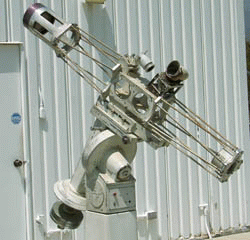 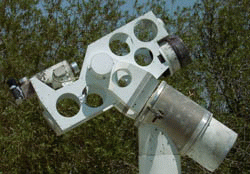 | Two patrol telescopes, each a 6-inch f/15 refractor, are available for both direct viewing and film photography of the sun. One is a white-light telescope that allows for viewing of sunspots only. The other uses a hydrogen-alpha filter at 656.3 nm to view a variety of solar features in the chromosphere. Used on a daily basis for a number of years, they are now reserved for special projects. |
| Shadowband Radiometer | |
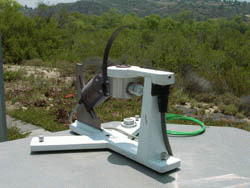 | The Rotating Shadowband Radiometer, built by Yankee Enviromental Systems, Inc. measures the global, direct, and diffuse components of solar irradiance. This instrument has a microprocessor-controlled shadowband that alternately shades and exposes the detector to obtain all three measurements. Data is obtained at the following seven wavelengths, each with 10 nm effective bandwidth: broadband (silicon pyranometer), 415 nm, 500 nm, 615 nm, 673 nm, 870 nm, and 940 nm.
The radiometer is mounted on an exterior platform attached to an upper level deck approximately 10 feet off the ground away from any possibility of shadowing. Data are taken only during daylight hours and are downloaded using the Yankee Environmental Systems Data Aquisition System (YESDAS). Data can then be analyzed with host software. |

Please direct questions or comments regarding site content to Angie Cookson.
Last updated: March 6, 2005